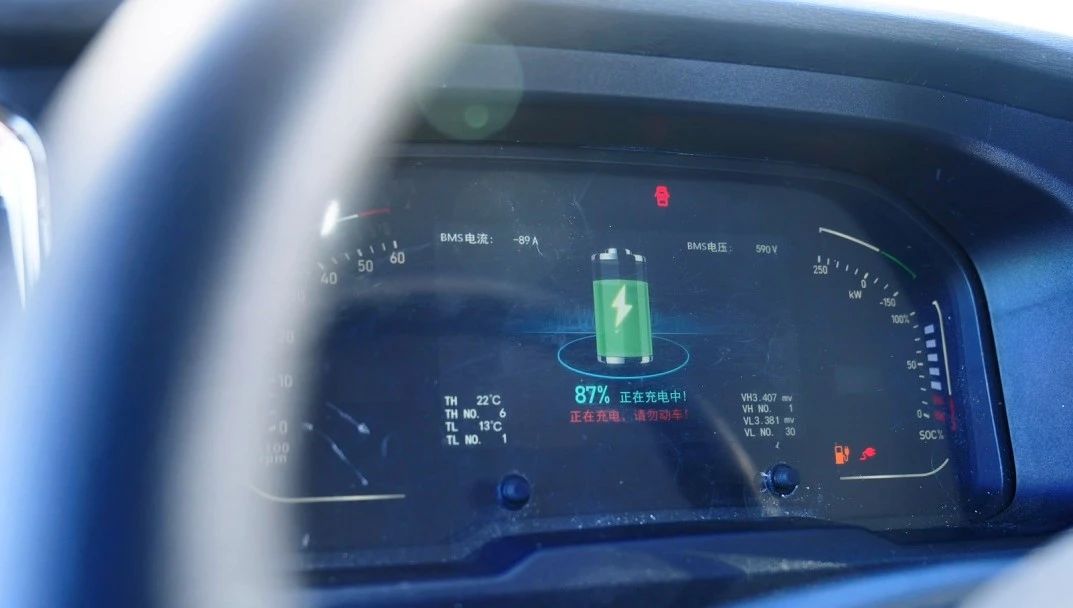When using new energy sanitation vehicles in winter, the correct charging methods and battery maintenance measures are crucial for ensuring vehicle performance, safety, and extending battery life. Here are some key tips for charging and using the vehicle:
Battery Activity and Performance:
In winter, the battery activity of pure electric sanitation vehicles decreases, leading to reduced output power and slightly lower dynamic performance.
Drivers should develop habits such as slow starts, gradual acceleration, and gentle braking, and set the air conditioning temperature reasonably to maintain stable vehicle operation.
Charging Time and Preheating:
Cold temperatures can extend charging times. Before charging, it is recommended to preheat the battery for about 30 seconds to 1 minute. This helps warm up the entire vehicle’s electrical system and extends the lifespan of related components.
YIWEI Automotive’s power batteries have an automatic heating function. When the vehicle’s high-voltage power is successfully activated and the lowest single cell temperature of the power battery is below 5°C, the battery heating function will automatically activate.
In winter, drivers are advised to charge the vehicle immediately after use, as the battery temperature is higher at this time, allowing for more efficient charging without additional preheating.
Range and Battery Management:
The range of pure electric sanitation vehicles is influenced by environmental temperature, operating conditions, and air conditioning usage.
Drivers should closely monitor the battery level and plan their routes accordingly. When the battery level drops below 20% in winter, it should be charged as soon as possible. The vehicle will issue an alarm when the battery level reaches 20%, and it will limit power performance when the level drops to 15%.
Waterproofing and Dust Protection:
During rainy or snowy weather, cover the charging gun and vehicle charging socket when not in use to prevent water and dust ingress.
Before charging, check if the charging gun and charging port are wet. If water is detected, immediately dry and clean the equipment, and confirm it is dry before use.
Increased Charging Frequency:
Low temperatures can reduce battery capacity. Therefore, increase the frequency of charging to prevent damage to the battery.
For long-term idle vehicles, charge the battery at least once a month to maintain its performance. During storage and transportation, the state of charge (SOC) should be kept between 40% and 60%. It is strictly prohibited to store the vehicle for a long time with an SOC below 40%.
Long-Term Storage:
If the vehicle is stored for more than 7 days, to avoid over-discharge and low battery levels, turn the battery’s power disconnect switch to the OFF position or shut off the vehicle’s low-voltage power main switch.
Note:
The vehicle should complete at least one full automatic charging cycle every three days. After a long period of storage, the first use should involve a complete charging process until the charging system automatically stops, reaching 100% charge. This step is crucial for SOC calibration, ensuring accurate battery level display and preventing operational issues due to incorrect battery level estimation.
To ensure the vehicle operates stably and durably, regular and meticulous battery maintenance is essential. To address the challenges of extreme cold environments, YIWEI Automotive conducted rigorous cold-weather tests in Heihe City, Heilongjiang Province. Based on real-world data, targeted optimizations and upgrades were made to ensure that new energy sanitation vehicles can charge and operate normally even under extreme climate conditions, providing customers with worry-free winter vehicle use.
Post time: Dec-03-2024


















